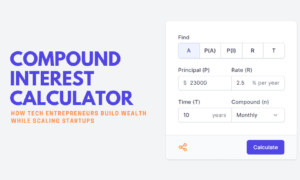Introduction:
In the ever-evolving landscape of technology, businesses are constantly seeking innovative solutions to streamline their operations and enhance productivity. Cloud computing has emerged as a game-changer, offering a range of service models to meet diverse organizational needs. In this article, we will explore and compare the three prominent cloud service models: Infrastructure as a Service (IaaS), Platform as a Service (PaaS), and Software as a Service (SaaS). By understanding the nuances of each, businesses can make informed decisions to harness the full potential of cloud computing.
Infrastructure as a Service (IaaS):
IaaS lays the foundation for cloud computing, providing virtualized computing resources over the internet. In this model, organizations can rent virtual machines, storage, and networking components on a pay-as-you-go basis. The flexibility offered by IaaS empowers businesses to scale resources up or down based on demand, eliminating the need for substantial upfront investments in hardware.
One of the key advantages of IaaS is the control it grants to users. Companies have full control over the operating systems, applications, and development frameworks deployed on the virtualized infrastructure. This level of control is particularly beneficial for businesses with specific security and compliance requirements.
Transitioning seamlessly between different infrastructure configurations becomes a breeze with IaaS, offering an agile and dynamic environment. This model is ideal for businesses with fluctuating workloads, providing the necessary infrastructure without the complexities of managing physical hardware.
Platform as a Service (PaaS):
PaaS takes cloud computing a step further by providing a comprehensive platform for developing, deploying, and managing applications. In this model, developers can focus on writing code and building features without worrying about the underlying infrastructure. PaaS abstracts away the complexities of hardware, allowing teams to concentrate on creating innovative solutions.
The efficiency gains in development cycles are one of the primary benefits of PaaS. With pre-built components and frameworks, developers can accelerate the application development process, reducing time-to-market. This streamlined approach enhances collaboration among development teams and facilitates the creation of scalable and robust applications.
Furthermore, PaaS simplifies the maintenance tasks associated with application hosting. Updates, patches, and scaling are managed by the platform, enabling organizations to allocate resources strategically. This model is well-suited for businesses aiming to optimize their development processes and focus on delivering value through applications.
Software as a Service (SaaS):
SaaS represents the pinnacle of cloud service models, offering ready-to-use applications over the internet. Unlike traditional software installations, SaaS eliminates the need for users to handle installation, maintenance, and updates. Applications are accessible through web browsers, making them readily available anytime, anywhere.
The accessibility and convenience of SaaS make it an attractive choice for businesses of all sizes. From email and collaboration tools to customer relationship management (CRM) and enterprise resource planning (ERP) solutions, SaaS covers a broad spectrum of applications. This model allows organizations to leverage cutting-edge software without the burden of managing the underlying infrastructure.
Seamless collaboration is a hallmark of SaaS, as multiple users can access and work on the same application simultaneously. This fosters real-time collaboration, enhancing productivity and efficiency across teams. Additionally, SaaS providers handle data security and compliance, relieving businesses of the responsibility to manage these critical aspects.
Comparing the Three Models:
While IaaS, PaaS, and SaaS each offer unique advantages, the choice between them depends on the specific needs and goals of a business. IaaS is the go-to option for organizations requiring maximum control over their infrastructure. It suits businesses with variable workloads and those seeking a cost-effective solution for managing scalable resources.
PaaS, on the other hand, is tailor-made for development teams looking to streamline their processes. The focus on application development without infrastructure concerns makes PaaS a preferred choice for organizations aiming to boost innovation and accelerate time-to-market.
SaaS, with its ready-to-use applications, is the epitome of user convenience. Businesses seeking hassle-free access to powerful software solutions without the burden of maintenance gravitate towards SaaS. The scalability and cost-effectiveness of this model make it an ideal choice for organizations prioritizing efficiency and accessibility.
Conclusion:
In conclusion, understanding the distinctions between IaaS, PaaS, and SaaS is crucial for businesses navigating the complex terrain of cloud computing. Each model serves a specific purpose, catering to diverse organizational needs. Whether it’s the control and flexibility of IaaS, the development efficiency of PaaS, or the convenience of ready-to-use applications in SaaS, cloud computing has ushered in a new era of possibilities for businesses seeking agility and innovation. By aligning their requirements with the strengths of each model, organizations can harness the transformative power of cloud computing to propel themselves into a more efficient and competitive future.



































